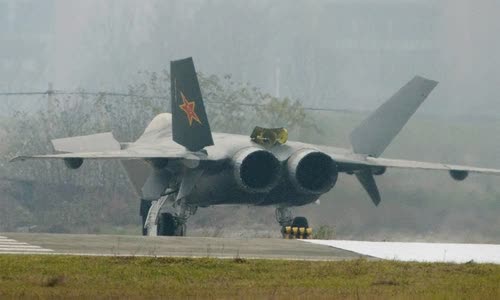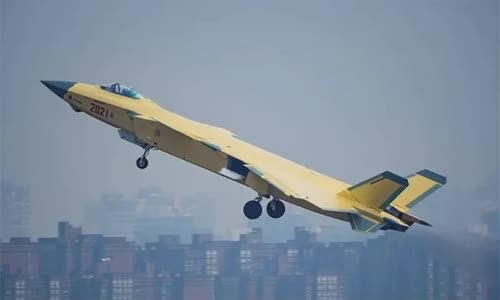China many years of developing the engine copying from Russia for J-20 fighters, but it is difficult because it does not hold core technology and creative motivation.
Injections of stealth J-20 is considered to be the most important aircraft model in Chinese arsenal, appearing many times in approval and continuously mentioned in the country's defense publications.

Photo: Reuters
However, J-20 and other domestic domestic planes face the lack of high performance, durable and effective jet engine samples.
The fact that China has difficulty with jet engines on fighters can be surprised when the country builds a giant military force.
China has long been thought to have dumping techniques reversed to copy foreign weapons.
The tail of a Chinese J-20 fighter.
Many countries around the world also apply reverse engineering to manufacture jet engines and China mainly rely on Russian fighter engine design to develop hearts for their fighters.
However, even though there are many opportunities to access Russia's jet engines, China's domestic engineering efforts are still unsuccessful.
According to Business Insider Benjamin Brimelow, the first reason China has a failure in this effort is that Russia does not want to sell the best fighter engine for China, after many bitter tasting from reverse industry
Therefore, Russia does not sell individual engines to China, instead only transferred the fighter, in which modern engines are welded, making it difficult to disconnect them to study and copy difficulties
Reverse industry does not easily bring success in developing new jet engines.
The last and most important reason is that the production of extremely complex jet engines, especially the engine for stealth fighters.
There are several real technologies at the peak of the manufacturing industry, jet engines are one of them, Timothy Heath, international and military experts at Rand research firm, said.
The main difficulty in making jet engines located at metallurgy and processing.
The design of such a motor can be copied, but the secret of producing and manufacturing metal parts can withstand high temperature with such a large rotation speed for thousands of hours, not to mention the weakness
Other Chinese disadvantages are units assigned to develop engines that are state corporations, which do not have much motivation to innovate innovation and develop advanced technology.

Photo: Weibo
They are just good at copying simple components and manufacturing simple things, Heath said.
Prototype J-20 number 2021 takes off in the test late 2020. Photo: Weibo.
China also recognizes issues about the jet engine they encounter.
Famous countries in the field of aviation become more rigorous to us when approaching technology, Liu said and said the recent US finding ways to limit the opportunity of Huawei Telecom Group shows us
In order to be able to access directly with the secrets in producing jets, China State Group Skyrizon seeks to buy Motor Sich control shares, a company of Ukraine specializing in manufacturing helicopters, machines
However, the Ukrainian government this year stopped the deal of Skyrizon's shares, most likely due to pressure from the US.
Despite many failures, China achieved a certain progress in developing jet engines.
Chinese sources said WS-15, the engine sample designed specifically for J-20, which can be completed within the next two years.
Russian AL-31F engine tail section (left) and WS-10C of China (right).
However, challenges with China's defense industry still.
China faces similar difficulties in microchip production and high-end semiconductors.
Some technologies are extremely difficult to implement.
China is not easily giving up in attempting to master technology.
All of these factors can only be achieved through long-term investment and knowledge accumulation, a Chinese expert then said.



 Andy Kovesdy
Andy Kovesdy







